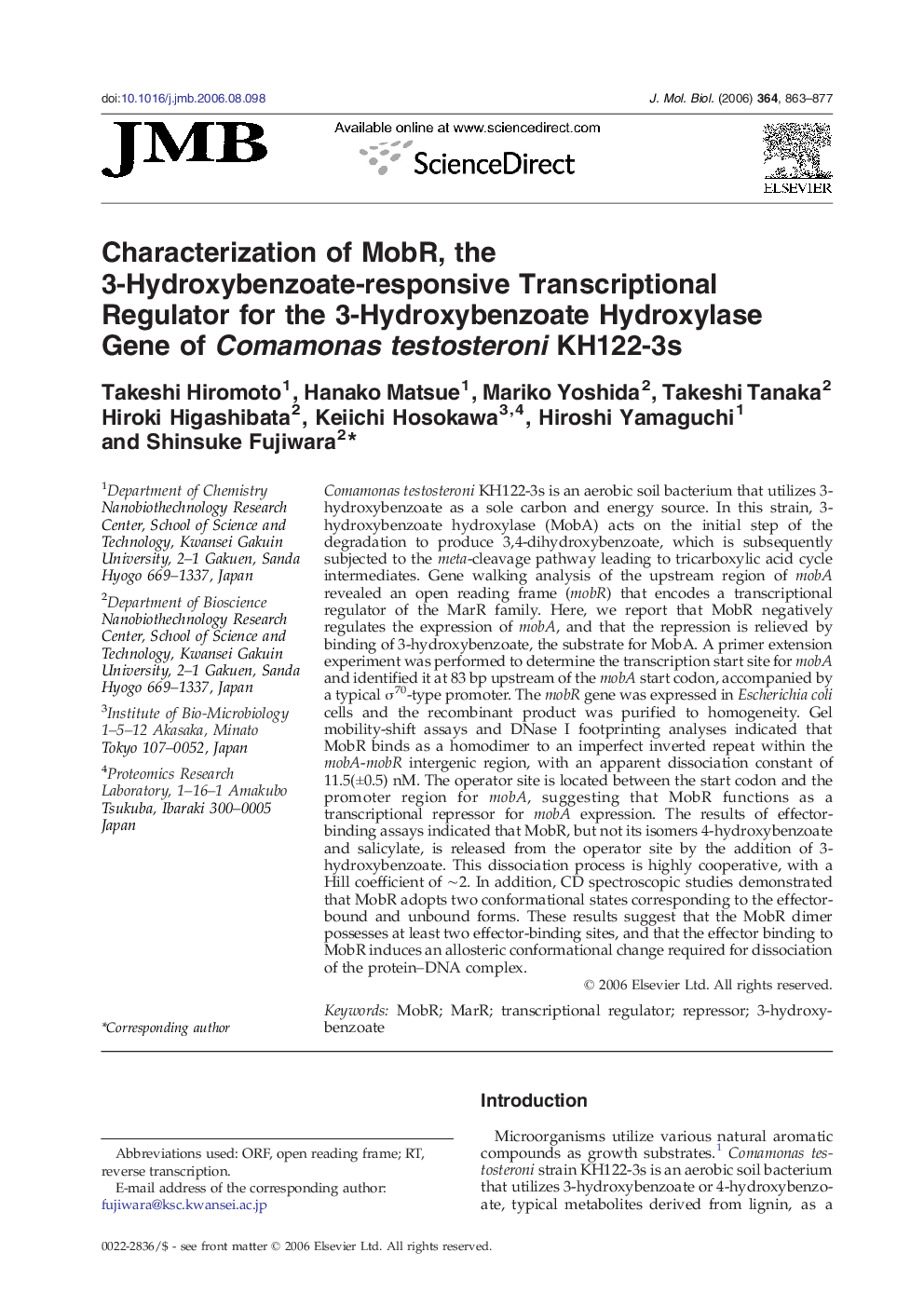| کد مقاله | کد نشریه | سال انتشار | مقاله انگلیسی | نسخه تمام متن |
|---|---|---|---|---|
| 2189298 | 1096206 | 2006 | 15 صفحه PDF | دانلود رایگان |

Comamonas testosteroni KH122-3s is an aerobic soil bacterium that utilizes 3-hydroxybenzoate as a sole carbon and energy source. In this strain, 3-hydroxybenzoate hydroxylase (MobA) acts on the initial step of the degradation to produce 3,4-dihydroxybenzoate, which is subsequently subjected to the meta-cleavage pathway leading to tricarboxylic acid cycle intermediates. Gene walking analysis of the upstream region of mobA revealed an open reading frame (mobR) that encodes a transcriptional regulator of the MarR family. Here, we report that MobR negatively regulates the expression of mobA, and that the repression is relieved by binding of 3-hydroxybenzoate, the substrate for MobA. A primer extension experiment was performed to determine the transcription start site for mobA and identified it at 83 bp upstream of the mobA start codon, accompanied by a typical σ70-type promoter. The mobR gene was expressed in Escherichia coli cells and the recombinant product was purified to homogeneity. Gel mobility-shift assays and DNase I footprinting analyses indicated that MobR binds as a homodimer to an imperfect inverted repeat within the mobA-mobR intergenic region, with an apparent dissociation constant of 11.5(±0.5) nM. The operator site is located between the start codon and the promoter region for mobA, suggesting that MobR functions as a transcriptional repressor for mobA expression. The results of effector-binding assays indicated that MobR, but not its isomers 4-hydroxybenzoate and salicylate, is released from the operator site by the addition of 3-hydroxybenzoate. This dissociation process is highly cooperative, with a Hill coefficient of ∼2. In addition, CD spectroscopic studies demonstrated that MobR adopts two conformational states corresponding to the effector-bound and unbound forms. These results suggest that the MobR dimer possesses at least two effector-binding sites, and that the effector binding to MobR induces an allosteric conformational change required for dissociation of the protein–DNA complex.
Journal: Journal of Molecular Biology - Volume 364, Issue 5, 15 December 2006, Pages 863–877